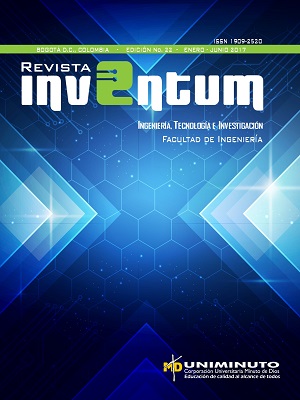Las aulas invertidas: una estrategia para enseñar y otra forma de aprender física
Barra lateral del artículo
Cómo citar
Altmetrics
Detalles del artículo
Se solicita a los autores que diligencien el documento de cesión de derechos de autor sobre el artículo, para que sea posible su edición, publicación y distribución en cualquier medio y modalidad: medios electrónicos, CD ROM, impresos o cualquier otra forma, con fines exclusivamente científicos, educativos y culturales
- La obra pertenece a UNIMINUTO.
- Dada la naturaleza de UNIMINUTO como Institución de Educación Superior, con un modelo universitario innovador para ofrecer Educación de alta calidad, de fácil acceso, integral y flexible; para formar profesionales altamente competentes, éticamente responsables y líderes de procesos de transformación social, EL CEDENTE ha decidido ceder los derechos patrimoniales de su OBRA, que adelante se detalla para que sea explotado por ésta
- El querer de EL CEDENTE es ceder a título gratuito los derechos patrimoniales de la OBRA a UNIMINUTO con fines académicos.
Biografía del autor/a
Blanca Flor Mora Ramírez, Colegio Manuel Antonio Rueda Jara
Licenciada en Educación Informática. Docente del Colegio Manuel Antonio Rueda Jara, Municipio de Villa
del Rosario.
César Augusto Hernández Suárez, Universidad francisco de Paula Santander
Doctor en Ingeniería de Sistemas y Computacion UNAL . Universidad francisco de Paula Santander.Contenido principal del artículo
Resumen
La implementación de un aula invertida como estrategia para gestionar el aprendizaje de la Física en estudiantes del Colegio Manuel Antonio Rueda Jara, buscó mejorar los desempeños académicos de la asignatura, apoyando el desarrollo de competencias a través de medios tecnológicos que facilitaron momentos pedagógicos presenciales y virtuales, donde se pudo ampliar los tiempos de estudio y los canales de comunicación; considerando que invertir la clase implica repasar contenidos declarativos de bajo nivel en casa; y que la práctica, «que implica alto nivel cognitivo», se desarrollará en el aula con la asesoría del maestro. El estudio realizado tuvo un enfoque cuantitativo, de tipo descriptivo; metodología que permitió concluir que el 86 % de los estudiantes encuestados se mostraron satisfechos con la estrategia; además, se mejoró el rendimiento académico de la asignatura en un 15 % para los grados décimos y un 17 % para los grados undécimos, de un periodo a otro.





